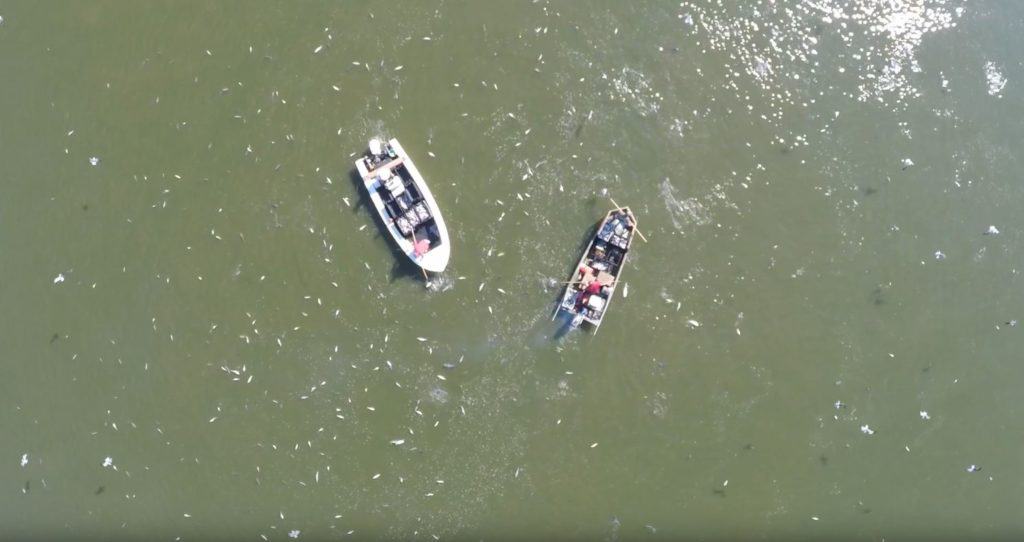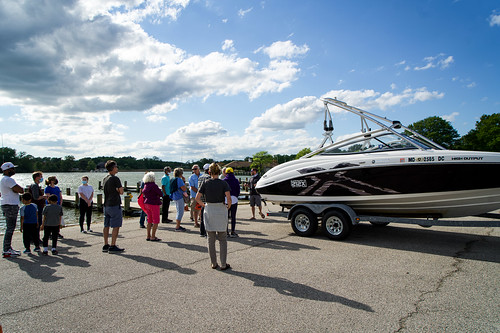Soon, electric current will be used to stun blue catfish and a select few fishermen will be able to scoop them right from the surface.
At its December 17th meeting, the Virginia Marine Resources Commission (VMRC) voted unanimously to approve a staff recommendation to create a commercial electro-fishing license and fishery for catfish.
The action opens the way to VMRC issuing three licenses in 2020 for commercial electro-fishing for introduced blue and flathead catfish in specific tidal sections of the James, Pamunkey, and Rappahannock Rivers.
The licenses will allow one waterman and crew in each river to send localized, low-frequency electrical current into the water to stun catfish, causing them to rise to the surface, to be picked up with dipnets.
The technique has long been a valuable tool for fisheries researchers, but this would be the first commercial application for it in the United States. It would complement the existing commercial fishery for blue catfish with conventional pound nets, hoop nets, and pots. The fish have proven especially popular at restaurants around Washington, DC and Annapolis, where they form the base of tasty tacos, po’ boys, and gumbos.
The proposed fishery is the second stage of a carefully-designed program to reduce the numbers of non-native blue catfish, which were introduced into these rivers in the 1970s to increase recreational angling opportunities but whose numbers have exploded, creating concern that they are damaging stocks of native species like river herring, shad, and rockfish (striped bass).
It builds on thirty years’ coordinated research into the species in the target rivers by the Virginia Department of Game & Inland Fisheries, Virginia Commonwealth University (VCU), Virginia Tech, and the Virginian Institute of Marine Science, including four years of an experimental commercial fishery by one waterman working closely with a VCU scientist.
That experiment showed this to be a very “clean” fishery, since the low electrical frequencies employed stun only smooth-skinned catfish, not fish species with scales.
The maximum size for harvest is 25 inches (about eight pounds), targeting the smaller fish that form 95 percent of the rivers’ populations. The size limit also allows larger fish (20 to 100 pounds) to support a popular catch-and-release trophy fishery that draws anglers from all over the United States.
The electro-fishery will be finely drawn, with a specific season (May 1-October 15), excluding weekends to avoid conflict with recreational anglers. There will also be a rule against electro-fishing within 100 yards of public boat ramps, fishing areas, and people in the water, as well as a 100-yard exclusion zone around marked commercial gear like pound nets. The fishermen who get a license must complete an electro-fishing safety course, and must call in to VMRC each day before fishing.
“I’m pleased with this proposal,” says veteran blue cat guide Capt. Mike Ostrander of Discover the James,.
“Whether we like them or not, the fish are here to stay. Well-regulated electro-fishing offers another tool to keep these fish stocks at reasonable levels, provide jobs for watermen, and offer the public fresh, local seafood while preserving a world-class trophy fishery. Many of the anglers who fish with me become active advocates for the river’s health as a result of their experiences.”
-John Page Williams




